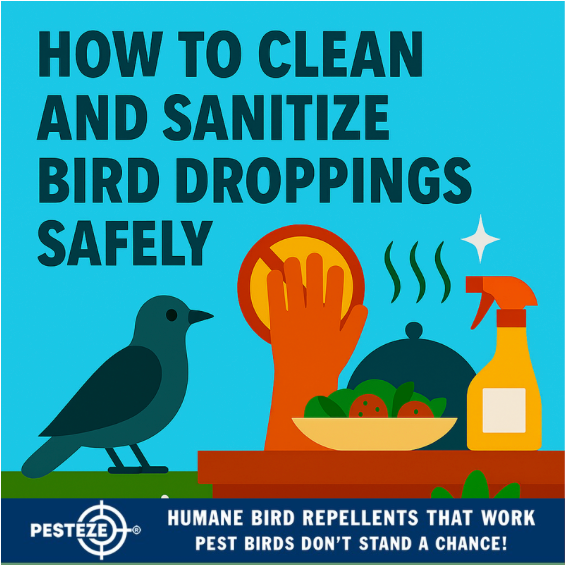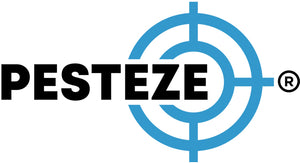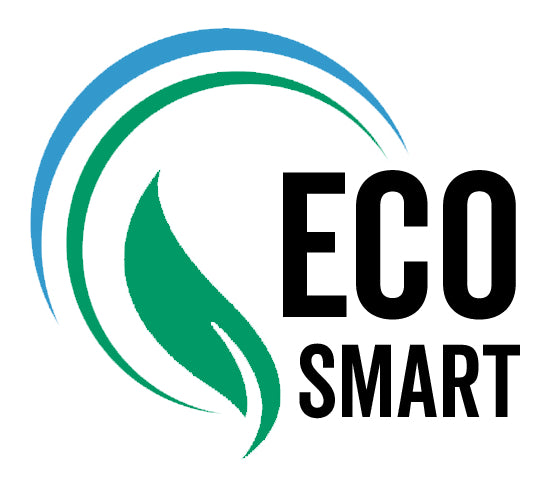HOW TO CLEAN AND SANITIZE BIRD DROPPINGS SAFELY

HOW TO CLEAN AND SANITIZE BIRD DROPPINGS SAFELY
SUMMARY
Bird droppings contain dangerous pathogens and parasites that pose serious health risks during cleanup. This essential safety guide provides step-by-step procedures for proper cleanup, sanitization, and disposal of bird waste while protecting yourself from disease transmission and respiratory hazards.
FEATURES
- Health Protection Protocols: Personal protective equipment and safety procedures to prevent disease transmission.
- Pathogen Elimination: Effective sanitization methods that destroy bacteria, viruses, and fungal spores.
- Safe Disposal Methods: Proper waste handling and disposal procedures that meet health regulations.
- Equipment Requirements: Essential tools and cleaning supplies needed for safe bird dropping cleanup.
- Surface-Specific Techniques: Cleaning methods adapted for different materials and surface types.
- Professional Standards: Industry-grade procedures used by hazmat and restoration professionals.
GUIDE DESCRIPTION
Bird droppings carry over 60 transmissible diseases including salmonella, E. coli, and histoplasmosis, making proper safety protocols essential for any cleanup activity. Dried droppings become airborne easily when disturbed, creating inhalation hazards that can cause serious respiratory infections and long-term health problems.
Personal protective equipment is absolutely essential before beginning any bird dropping cleanup. N95 or P100 respirators protect against airborne pathogens, while disposable coveralls, gloves, and shoe covers prevent contamination of clothing and skin. Eye protection prevents splashing during cleaning, and all PPE should be disposed of immediately after use.
Area preparation minimizes contamination spread during cleanup activities. Close windows and turn off fans to prevent airborne particles from spreading throughout the building. Seal off the work area with plastic sheeting when possible, and remove or cover nearby items that could become contaminated during the cleaning process.
Initial wetting procedures prevent dangerous dust clouds that occur when dry droppings are disturbed. Spray affected areas with water or disinfectant solution before beginning removal to keep particles from becoming airborne. Allow adequate contact time for disinfectants to begin killing pathogens before physical removal begins.
Removal techniques vary based on surface types and contamination severity. Scrape solid waste carefully into disposal bags using disposable tools that can be discarded afterward. Avoid aggressive scrubbing that creates splashing or aerosols, and work from cleanest to most contaminated areas to prevent cross-contamination.
Disinfection protocols require hospital-grade antimicrobial solutions that are proven effective against bird-borne pathogens. Bleach solutions (1:10 ratio), quaternary ammonium compounds, or commercial disinfectants labeled for pathogen control should be applied after initial cleanup. Multiple applications may be necessary for heavily contaminated areas.
Surface-specific considerations require different approaches for optimal results. Porous materials like wood or concrete may require deeper penetration times for disinfectants, while metal surfaces can tolerate stronger cleaning solutions. Fabric items should often be discarded rather than cleaned due to contamination risks.
Waste disposal procedures must comply with local health regulations for biohazardous materials. Double-bag all contaminated materials including cleaning supplies, PPE, and removed droppings. Seal bags securely and label as biohazardous waste where required by local regulations. Contact waste management services for proper disposal guidance.
Post-cleanup sanitization ensures complete pathogen elimination and prevents recontamination. Final disinfection of all surfaces, tools, and equipment used during cleanup prevents residual contamination. Air filtration systems may need professional cleaning if contamination was extensive or cleanup occurred in enclosed spaces.
Health monitoring after exposure is important even with proper safety procedures. Watch for respiratory symptoms, fever, or gastrointestinal issues that could indicate disease transmission. Seek medical attention immediately if symptoms develop, and inform healthcare providers about potential bird dropping exposure.
Professional cleanup services should be considered for large-scale contamination, indoor accumulations, or situations involving immunocompromised individuals. Certified hazmat professionals have specialized equipment and training to handle extensive contamination safely while ensuring complete sanitization.
Prevention strategies reduce future cleanup requirements and health risks. Address bird control issues that led to dropping accumulation, increase cleaning frequency in problem areas, and install barriers or deterrents to prevent continued contamination of cleaned surfaces.
Documentation requirements may apply for commercial properties or insurance claims. Photograph contaminated areas before cleanup, maintain records of cleaning products and procedures used, and save receipts for professional services if extensive cleanup or property damage occurs.
- Pukhraj Sharma


Comments 0